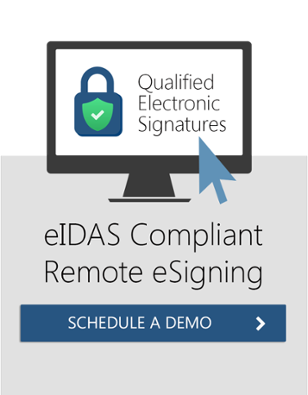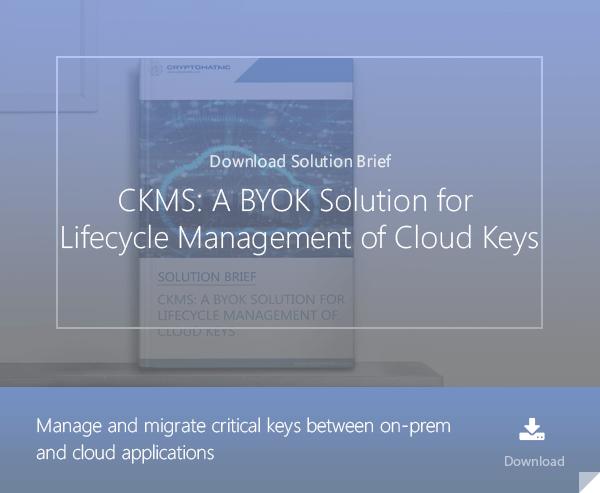
- Home >
- Digital Identity and eIDAS in Banking
The eIDAS Regulation lays the groundwork for creating a robust digital identity framework. The idea is to provide EU citizens with a secure, robust and universal electronic identification that they can use to access private and public services anywhere within the EU.
One sector that is lapping up the new opportunities that eIDAS offers is banking.
Banks have some of the toughest regulatory requirements and play a key role in combating financial crime, identity theft, terror funding and other such illegal activity. eIDAS offers banks a powerful new tool to ensure industry leading identification and authentication standards for their clients. In this article, we take a brief look at how electronic identification regulations like eIDAS can benefit banks and their clients.
 The advantage to banks
The advantage to banks
Customer on-boarding and new account opening is perhaps the single most time consuming and costly phase of the customer acquisition process for banks. It involves checking all KYC documents and performing all applicable Anti-Money Laundering checks, Counter Terrorist Financing checks, sanctioned country linkages by dozens of agencies and so on. For corporate clients, it goes a lot deeper and these checks also have to be performed for key management personnel, signatories, major shareholders, holding companies etc. Every stage requires a new set of documents to be sourced and analyzed. Lapses here can cause serious regulatory backlash while delays can cost the banks potential customers.
This is why regulation like eIDAS are being welcomed by banks with open arms. A standardized electronic identification system across the EU will help banks greatly speed up the process of account opening (and periodic updation of KYC information) and reduce their own compliance costs greatly. Instead of dealing with passports or driving licenses in various languages, the banks can simply rely on a standardized and much safer electronic identification.
A pan-European eID framework also allows bank to tap customers in other EU countries and compete across the Single Market. Part of their cost savings might be passed on to the consumers as well and would create a win-win situation for everyone.
 The citizen advantage
The citizen advantage
For the average bank client, either retail or corporate, eIDAS will translate to a much more seamless banking experience. They no longer have to grapple with dozens of login credentials or keep track of numerous multi factor authentication tools. What's more is that their electronic ID would not only be applicable for banking products and financial services but for public services and other consumer services as well.
Another major advantage would be the added level of security that the system would provide. Financial crime and identity theft is often cited as the biggest hindrance to the growth of the digital financial marketplace and regulations like eIDAS can significantly improve the situation on that front.
Finally, eIDAS allows for a single ID to be used across all EU member states and this means that EU citizens would be free to choose their service provider from anywhere within the single market. This allows them to get the best deals on the best products which best meets their personalized requirements.
References and Further Reading
- REGULATION (EU) No 1316/2013 establishing the Connecting Europe Facility, amending Regulation (EU) No 913/2010 and repealing Regulations (EC) No 680/2007 and (EC) No 67/2010(12/2013), by the European Parliament and the European Council
- Selected articles on Authentication (2014-18), by Heather Walker, Luis Balbas, Guillaume Forget, Jan Kjaersgaard, Dawn M. Turner and more
- Selected articles on Electronic Signing and Digital Signatures (2014-todays), by Ashiq JA, Guillaume Forget, Jan Kjaersgaard , Peter Landrock, Torben Pedersen, Dawn M. Turner, Tricia Wittig and more
- The European Interoperability Framework - Implementation Strategy (2017), by the European Commission
- Proposal for a DIRECTIVE OF THE EUROPEAN PARLIAMENT AND OF THE COUNCIL amending Directive (EU) 2015/849 on the prevention of the use of the financial system for the purposes of money laundering or terrorist financing (2016), by the European Commission
- REGULATION (EU) 2016/679 on the protection of natural persons with regard to the processing of personal data and on the free movement of such data, and repealing Directive 95/46/EC (General Data Protection Regulation) (2016), by the European Parliament and the European Council
-
Proposal for a REGULATION concerning the respect for private life and the protection of personal data in electronic communications and repealing Directive 2002/58/EC (Regulation on Privacy and Electronic Communications), (2017), by the European Parliament and the European Council
- Revised Directive 2015/2366 on Payment Services (commonly known as PSD2) (2015), by the European Parliament and the Council of the European Union
- REGULATION (EU) No 910/2014 on electronic identification and trust services for electronic transactions in the internal market and repealing Directive 1999/93/EC (2014) by the European Parliament and the European Commission
- DIRECTIVE 2013/37/EU amending Directive 2003/98/EC on the re-use of public sector information (2013) by the European Parliament and the Council
Image: Bank of England, courtesy of Dun.can, Flickr (CC BY 2.0)
